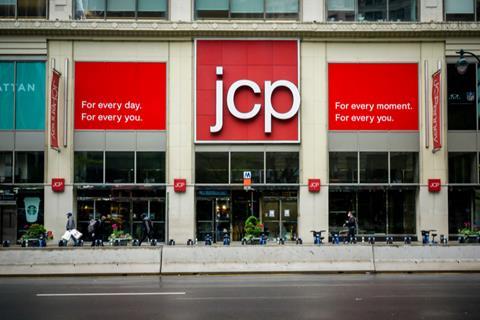JC Penney has been a staple of the US retail landscape for as long as most Americans can remember.
It even features in the hit Netflix show Stranger Things as a prominent anchor of the Starcourt Mall. Back in the 1980s, when the show was set, JCP was riding high as a popular destination for family and fashion shoppers alike.
Fast-forward to today and the picture could not be more different.
After a long period of decline, where customers and sales drifted away, JCP has filed for bankruptcy. As part of this process, 242 stores will close, around a third of the total. Debt will be restructured and the group will work to rebuild its beleaguered brand.
For JCP, the problems began during the financial crisis of 2008.
The company misunderstood the severity of the downturn and failed to make its ranges more compelling – and therefore better value for money.
“JC Penney misunderstood the severity of the downturn and failed to make its ranges more compelling – and therefore better value for money”
It lost customers to more cheaply priced discounters and many of those shoppers never returned to the brand that – by the time the recession was over – felt tired, boring and uncared for.
This inertia gave way to a spurt of activity in the form of Apple’s Ron Johnson who took the helm of JCP in 2011. Johnson had some good ideas, but he was too radical for JCP and had little understanding of its customers or market position.
JCP needed some touching up and an injection of colour. However, Johnson had ripped up the old canvas and proceeded to paint an entirely new picture that did not find favour with JCP’s traditional shoppers.
The reinvention was a disaster, with the switch away from promotions and sales events proving to be massively unpopular. It was also costly and JCP burnt through cash, causing significant distress to the balance sheet.
In brand terms, a lot of trust between customers and JCP was destroyed. A lot of brand confusion was created too and JCP ended up a much weaker company because of it.
Righting wrongs

After Johnson, JCP set about righting many of the mistakes. However, the room for manoeuvre was limited because of the financial mess the company was in.
There was little investment in stores, products or staff and JCP struggled in a market that was becoming more and more competitive, and where preferences were polarising between high-end products on the one hand and fast, cheaper fashion on the other.
It never picked a side, preferring to remain the murky middle.
In 2015, Marvin Ellison took over as chief executive. He did a lot to improve staff morale and made smart moves such as expanding the partnership with Sephora and investing in improvements to home furnishings departments.
These things helped JCP to regain some ground. However, there was never an integrated strategy to revive the brand and the big problem area – fashion – was never addressed.
In late 2018, the leadership changed again when Jill Soltau was appointed chief executive. Soltau inherited a mess but has made some progress.
Inventory levels have been reduced, a more credible fashion offer focused on the core customer is in development, margins and profitability have improved and debt levels reduced.
“Reinventing during a period of national crisis and when demand is muted like no one has ever seen will be a Herculean task”
A new concept format has also been trialled in Texas, which is a bold, yet appropriate, departure from traditional stores.
Arguably, these moves should have been made 10 years ago, but at least JCP finally seems to be on the right track.
Or it was before the coronavirus crisis blew it firmly off course. Without the financial firepower to withstand the downturn in trade the company had no choice but to file for bankruptcy.
The good news is that under Chapter 11 it will be able to restructure more radically. The bad news is that reinventing during a period of national crisis and when demand is muted like no one has ever seen will be a Herculean task.
JCP’s story is a cautionary one and highlights that no retailer – no matter how big or famous – is immune from decline.
Taking the wrong steps – or even taking no steps and failing to evolve as the consumer world changes – is a pathway to failure.
There are echoes of JCP in many retailers from Macy’s to Marks & Spencer. It is a case study in how not to run a retailer.































No comments yet